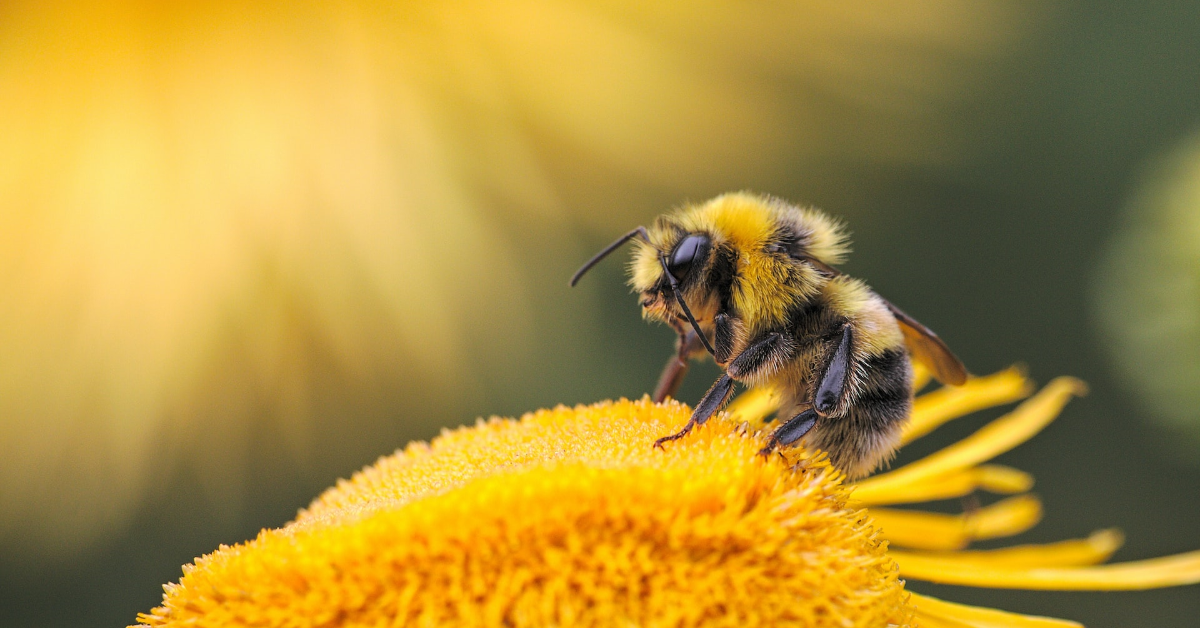Exploring the Fascinating World of Honeybees: 13 Surprising Facts About These Important Pollinators

Honeybees are a fascinating and essential part of our world. These social insects are known for their ability to make honey and their role as pollinators, helping to fertilize flowers and plants and produce many of the fruits, vegetables, and nuts that we rely on.
With their highly developed system of communication and division of labor, honeybees work together to maintain their hive and ensure the survival of their colony.
From their excellent memory and ability to navigate using the sun as a reference point, to their finely tuned senses of smell and the ability to recognize individual bees, there is much to learn and appreciate about these amazing creatures.

1. Social Structure of the Hive
Honeybees live in colonies or hives made up of a queen bee, male drones, and female worker bees. The queen bee is responsible for laying eggs, while the worker bees gather nectar, build and maintain the hive, and defend the hive from predators. The drones, or male bees, have the sole purpose of mating with queens from other hives.
2. Honey Production
Honeybees are known for their ability to make honey, which they produce from the nectar of flowers. They store the honey in wax cells within the hive and use it as a food source during times when there are no flowers available.
3. Pollination
Honeybees are important pollinators, meaning they help to pollinate flowers and plants as they move from one flower to another. This process helps to fertilize plants and is essential for the production of many fruits, vegetables, and nuts.
4. Communication
Honeybees have an excellent memory and are able to remember the location of food sources and flowers. They communicate the location of these resources to other bees in the hive using a series of dances.
5. Temperature Regulation
Honeybees have a special way of keeping the hive at a constant temperature. When the outside temperature is too cold, the bees huddle together and vibrate their muscles to generate heat. When the temperature is too hot, they fan their wings to cool the hive down.

6. Stingers
Honeybees are known for their stingers, which they use to defend themselves and the hive. However, worker bees can only sting once before they die.
7. Domestication and Uses
Honeybees have been domesticated for thousands of years, and honey has been used as a sweetener and medicinal remedy for just as long. Today, honeybees are also used in the production of beeswax, which is used in a variety of products, including candles and cosmetics.
8. Flight
Honeybees are able to fly at speeds of up to 15 miles per hour (24 km/h). They navigate using the sun as a reference point and are able to fly in a straight line even when the sun is not visible.
9. Eyesight
Honeybees have five eyes, including three small, simple eyes on the top of their heads that detect light intensity and direction, and two larger compound eyes on the sides of their heads that provide detailed vision.
10. Sense of Smell
Honeybees have a highly developed sense of smell and are able to detect the scent of flowers from up to 6 miles (10 km) away. They use this sense to locate flowers and food sources.
11. Recognition
Honeybees are able to recognize individual bees within their hive using a combination of scent, behavior, and appearance. This helps them to identify their hive mates and distinguish between members of their own hive and bees from other hives.
12. Environmental Indicators
Honeybees are important indicators of the health of the environment. Because they are so sensitive to changes in their environment, declines in honeybee populations can be an early warning sign of environmental problems.
13. Diversity
There are over 20,000 known species of bees, with the honeybee being just one of them. However, honeybees are the most widely recognized and studied species due to their importance in agriculture and the production of honey.

In conclusion, honeybees are an integral part of our ecosystem and are worth learning more about. From their role in pollination and honey production to their unique behaviors and adaptations, there is always more to discover about these fascinating insects.
Whether you are a seasoned beekeeper or simply have a curiosity about these amazing creatures, learning more about honeybees is sure to be a rewarding and enriching experience.





